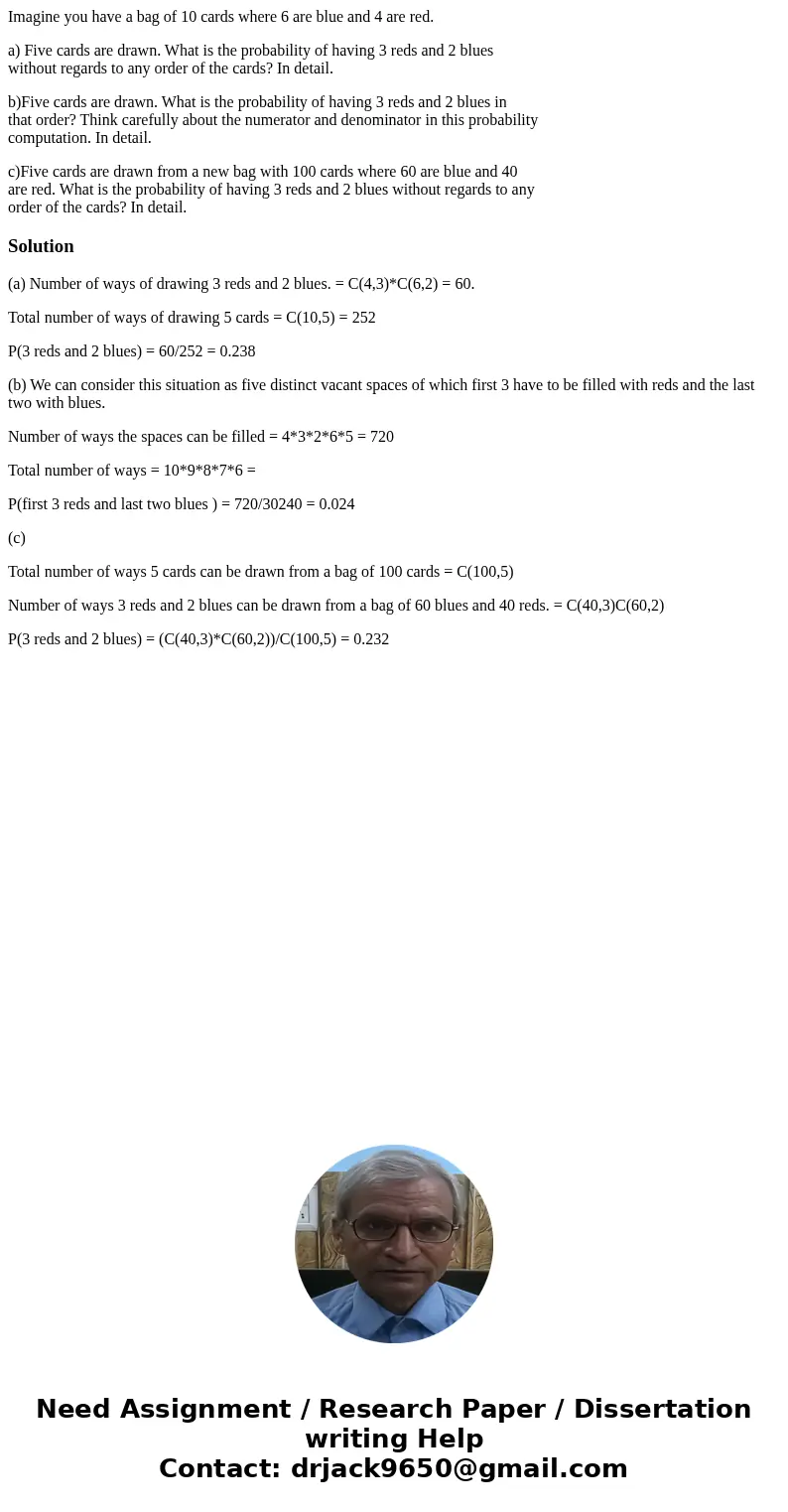Imagine you have a bag of 10 cards where 6 are blue and 4 ar
Imagine you have a bag of 10 cards where 6 are blue and 4 are red.
a) Five cards are drawn. What is the probability of having 3 reds and 2 blues
without regards to any order of the cards? In detail.
b)Five cards are drawn. What is the probability of having 3 reds and 2 blues in
that order? Think carefully about the numerator and denominator in this probability
computation. In detail.
c)Five cards are drawn from a new bag with 100 cards where 60 are blue and 40
are red. What is the probability of having 3 reds and 2 blues without regards to any
order of the cards? In detail.
Solution
(a) Number of ways of drawing 3 reds and 2 blues. = C(4,3)*C(6,2) = 60.
Total number of ways of drawing 5 cards = C(10,5) = 252
P(3 reds and 2 blues) = 60/252 = 0.238
(b) We can consider this situation as five distinct vacant spaces of which first 3 have to be filled with reds and the last two with blues.
Number of ways the spaces can be filled = 4*3*2*6*5 = 720
Total number of ways = 10*9*8*7*6 =
P(first 3 reds and last two blues ) = 720/30240 = 0.024
(c)
Total number of ways 5 cards can be drawn from a bag of 100 cards = C(100,5)
Number of ways 3 reds and 2 blues can be drawn from a bag of 60 blues and 40 reds. = C(40,3)C(60,2)
P(3 reds and 2 blues) = (C(40,3)*C(60,2))/C(100,5) = 0.232

 Homework Sourse
Homework Sourse